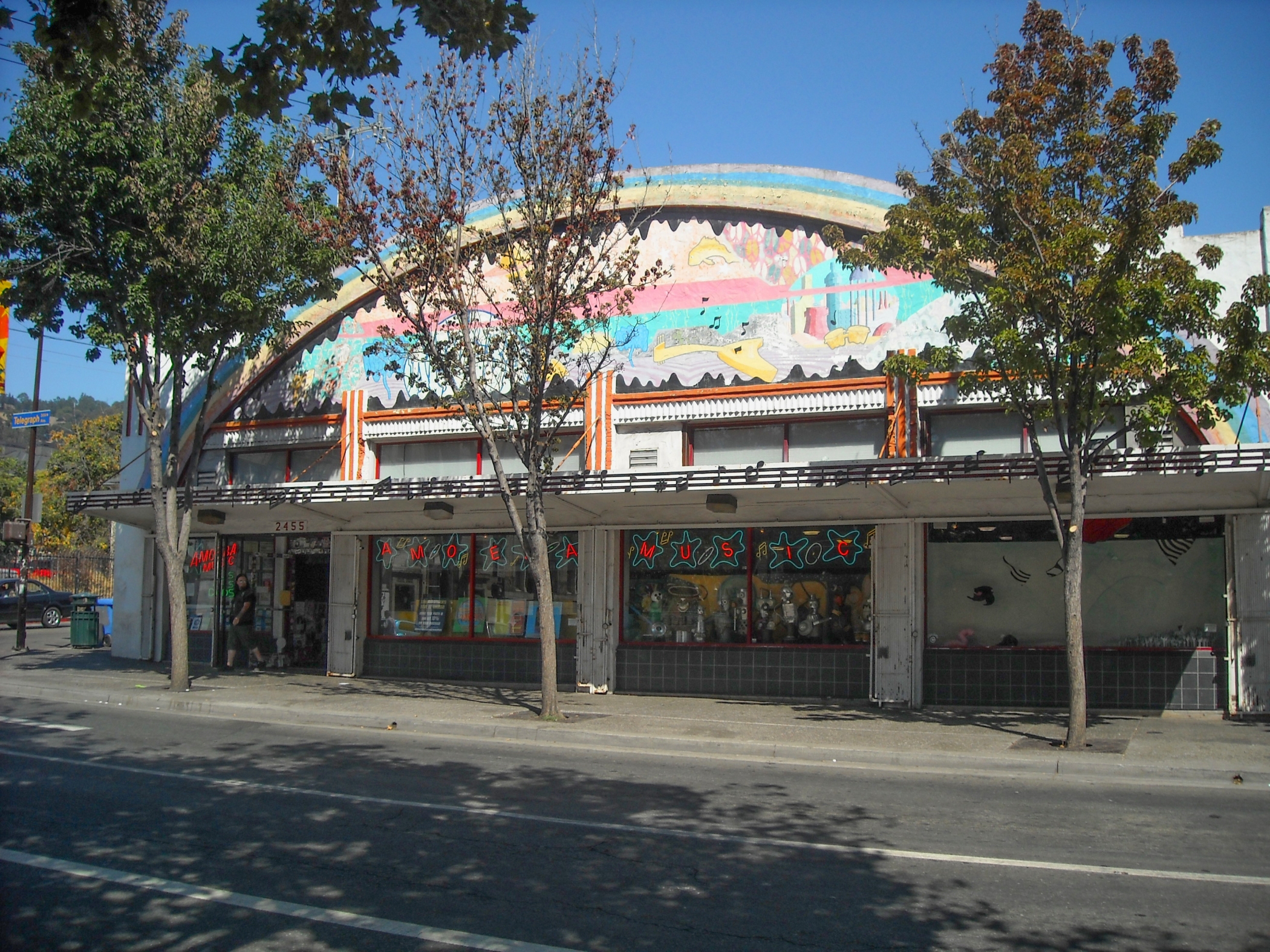An iconic California record store chain that managed to weather the music industry’s transformation from vinyl to CDs to digital streaming now aims to survive the state’s ongoing push for more housing.
The owners of Amoeba Music have hatched a plan with a developer to build student apartments atop the California chain’s flagship store on Berkeley’s Telegraph Avenue, just a few blocks from the University of California campus.

Dave Prinz and Marc Weinstein, who opened the record store at 2455 Telegraph Ave. in 1990, say the proposal to redevelop the property ensures the survival of Amoeba Music and its famous rainbow entryway as well as a historic mural on the side of the building that celebrates Berkeley's legacy of social activism.
Rhoades Planning Group is the developer on the proposed project. Founder and Chief Executive Mark Rhoades said in an email to CoStar News that the plans were still rough but would call for roughly 70 units above the store.
Amoeba has a track record of pivoting its real estate strategy in the face of changing tides — first, shifting music trends, and more recently, a push from developers and state officials to increase housing inventory.
The store's massive Los Angeles location opened in 2001 and closed a couple decades later after a developer pursued plans to replace the building at 6400 Sunset Blvd. with a 26-story luxury apartment tower. Before those plans took off, Amoeba moved to the ground floor of an apartment project nearby at 6200 Hollywood Blvd.

In Berkeley, most of the existing building along Telegraph Avenue would be torn down to make way for the apartments, while the record store — the largest west of the Mississippi River — would stay on the ground floor.
Rhoades said the development team planned to submit an application under SB 330, the state law that streamlines the approval process for qualifying projects, in the next week or so.
Changing tides
Funds from the development of much-needed student housing on the site will be used to create an endowment to preserve not just the record store but also the mural on the side of the building "for generations to come," according to a press release, which said the housing proposal is backed by "a coalition of Berkeley artists and property owners."
The mural depicts the grassroots social movements and political upheaval that took place in Berkeley in the 1960s. It has the blessing of the lead artist, well-known Berkeley attorney and activist Osha Neumann, who painted the “People’s History of Telegraph Avenue” back in 1976.
“This partnership is intended to benefit students, music lovers, art lovers, free speech advocates and all who celebrate the uniqueness of Berkeley,” Prinz said in a statement. “We are pleased to be able to announce a proposal that will preserve Amoeba Music and the People’s Park Mural for future generations of students, tourists and Berkeley residents.”
Amoeba distinguished itself from its earliest days with its enormous selection of new and used vinyl, CDs and cassettes. The business expanded with a second store in San Francisco’s Haight-Ashbury neighborhood in 1997 and a third location in Hollywood, the one that has since relocated.
Amoeba survived the shifts in those decades that shuttered other independent record stores across the country by functioning as much as a community space as a retailer, holding free in-store concerts that featured artists ranging from Paul McCartney to emerging indie bands.
Housing push
Gaining approval for the Berkeley housing project at such an important address would have been unthinkable in years past, when Berkeley’s politically active citizenry was known for blocking housing developments from being built in its leafy neighborhoods.
But the climate has shifted dramatically in recent years, particularly among officials who have been working to address concerns over climbing housing costs.
Rents in the East Bay, including Berkeley, climbed 1.3% in the past year to $2,455 a month, about 40% above the nation's average. Rents in nearby San Francisco, meanwhile, hit a new high of more than $3,300 in August. The annual growth rate of over 6% remains the highest among the major US markets, and well ahead of the second-highest market, Chicago, at 3.75%, according to a CoStar analytics report.
In the last two years, Berkeley has approved three apartment buildings over 25 stories. Among those, officials recently gave the green light for what could be the city's tallest residential tower.
The 599-unit project would be 312 feet high, taller than the University of California, Berkeley's 307-foot Campanile, the world's second-tallest freestanding clock and bell tower. The project could also mark the largest residential tower on a unit basis; it's more than twice the scale of the city's current largest tower, the 259-unit Aquatic Fourth Street building, which spans five stories.
Rhoades, who isn't involved in that project but headed Berkeley’s planning department from 1997 to 2007, said there isn't yet a construction timeline, but developers are "putting the pieces in place."
Rhoades is involved in a number of housing projects Berkeley has greenlighted in the past couple of years, including a proposed 28-story project at 1998 Shattuck Ave. that was approved in June.
The college town is suffering from a particularly dire shortage of student housing. UC Berkeley houses only around 22% of its more than 45,000 students, the lowest percentage in the University of California system.


